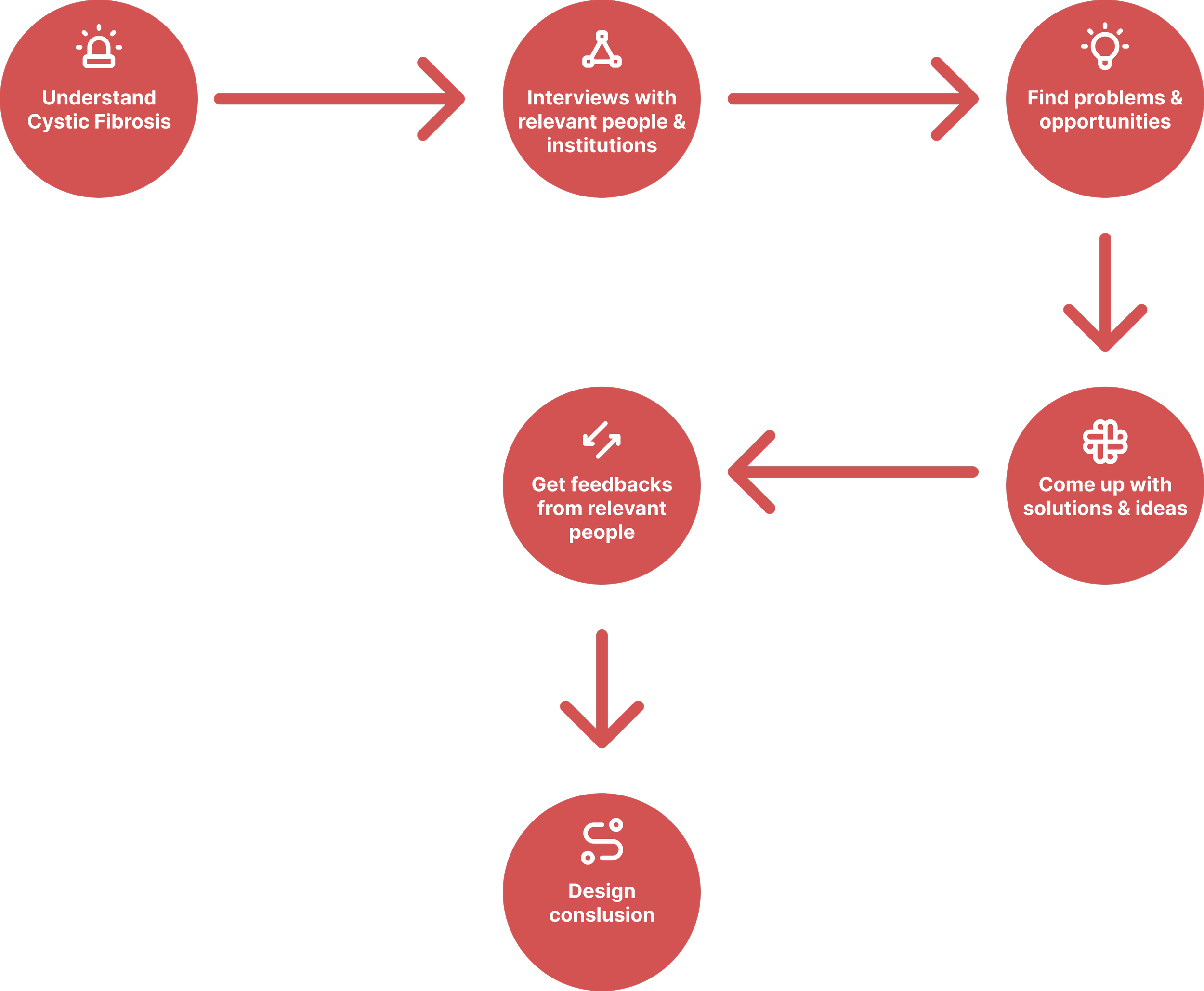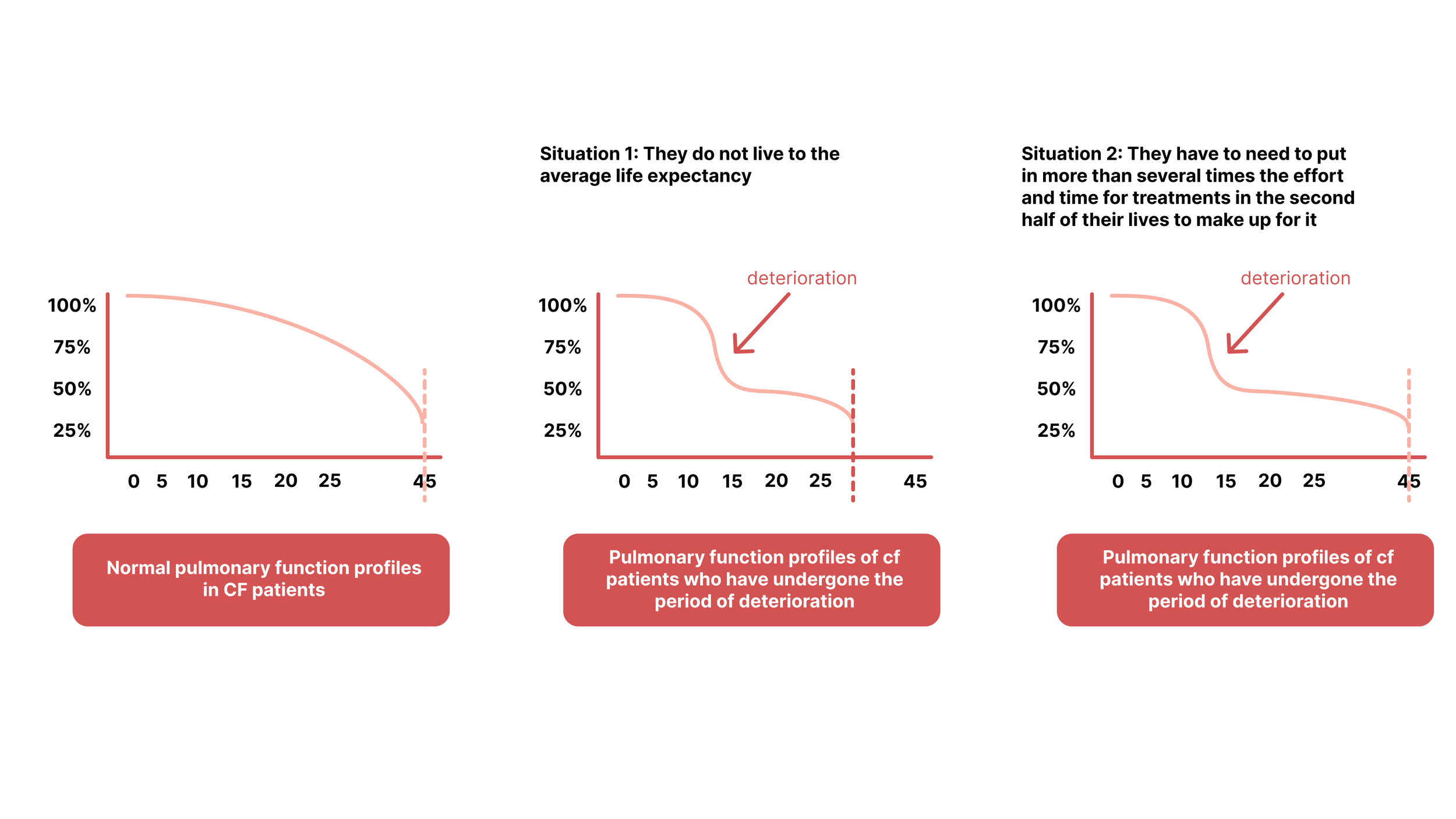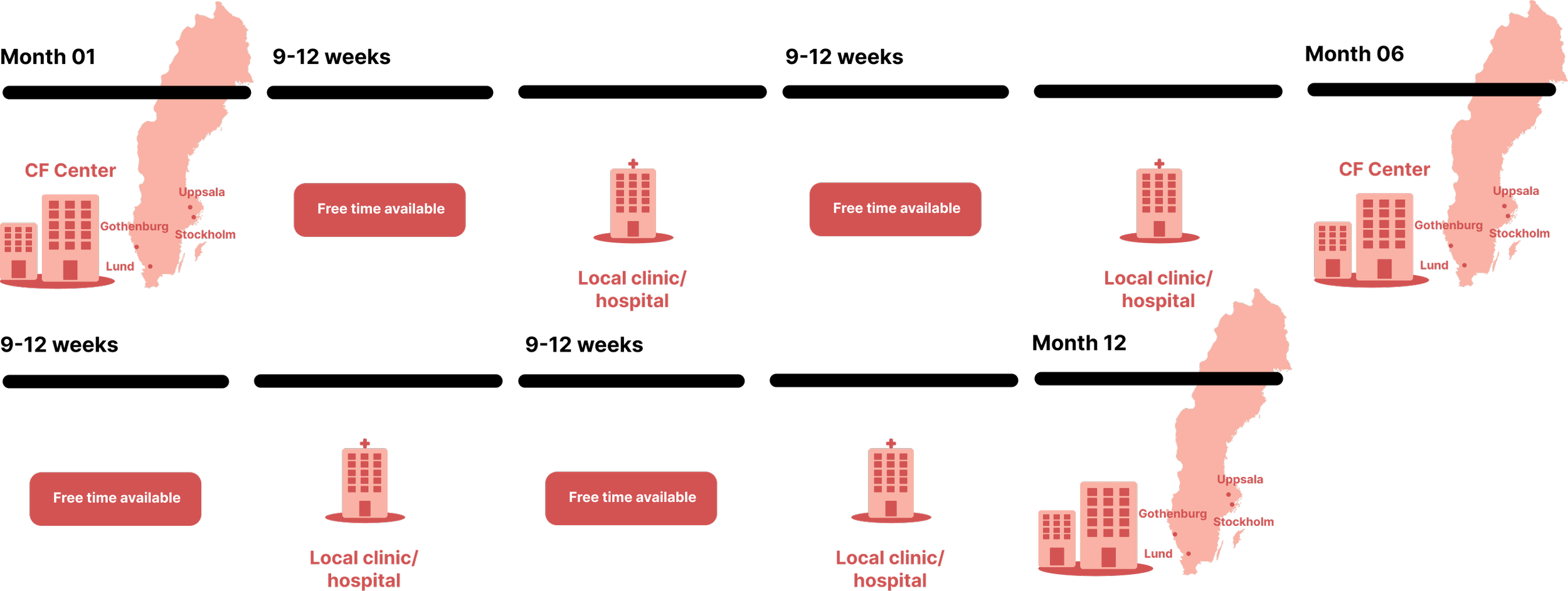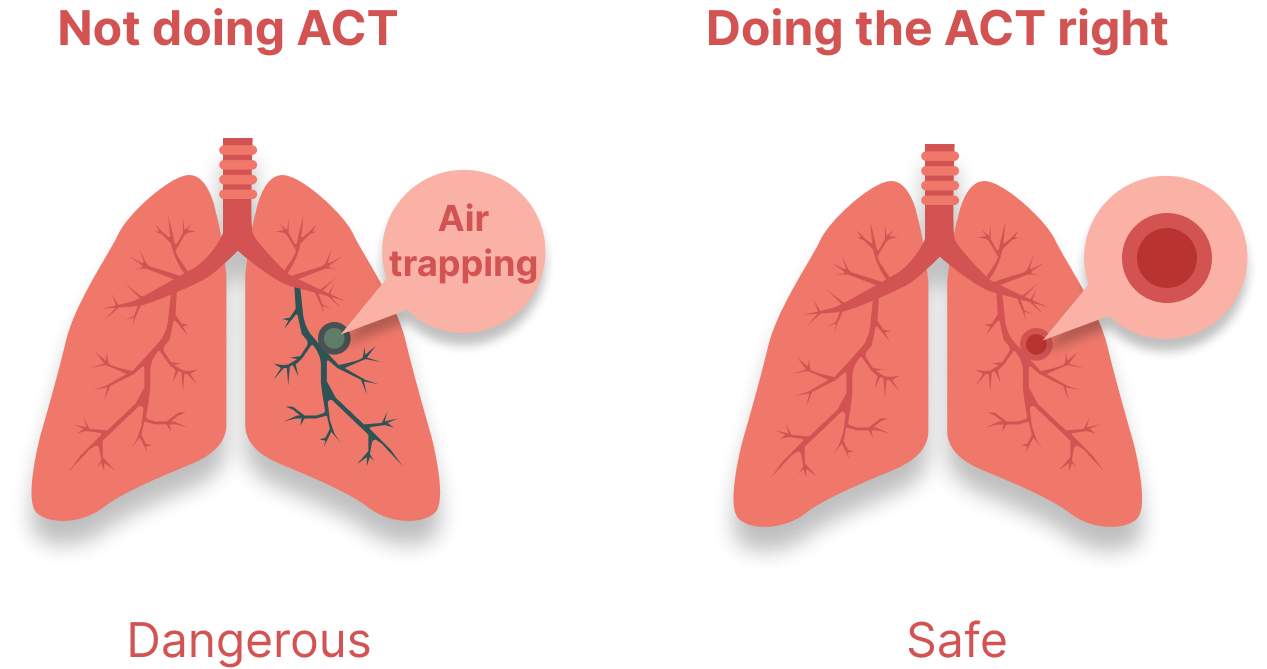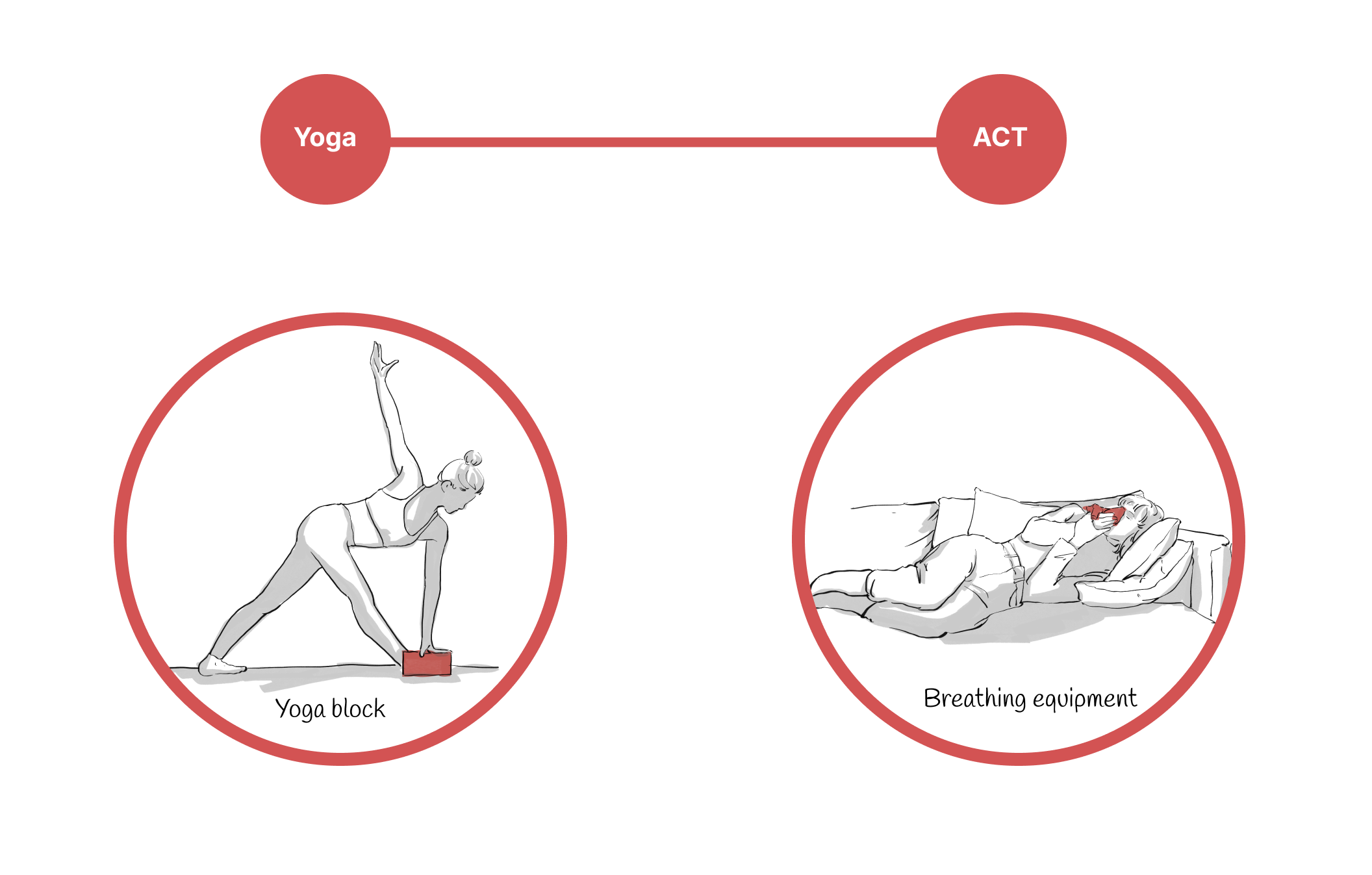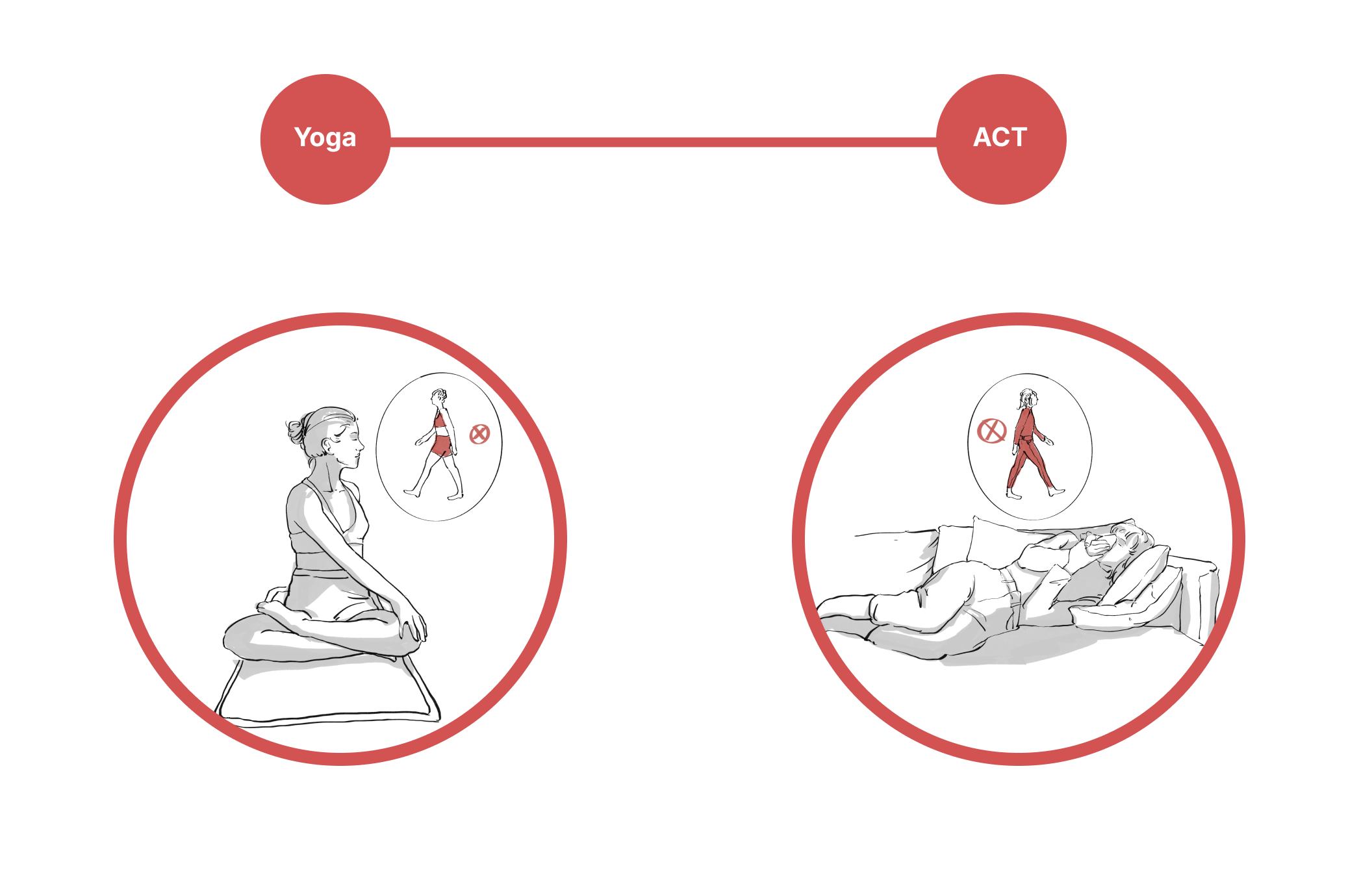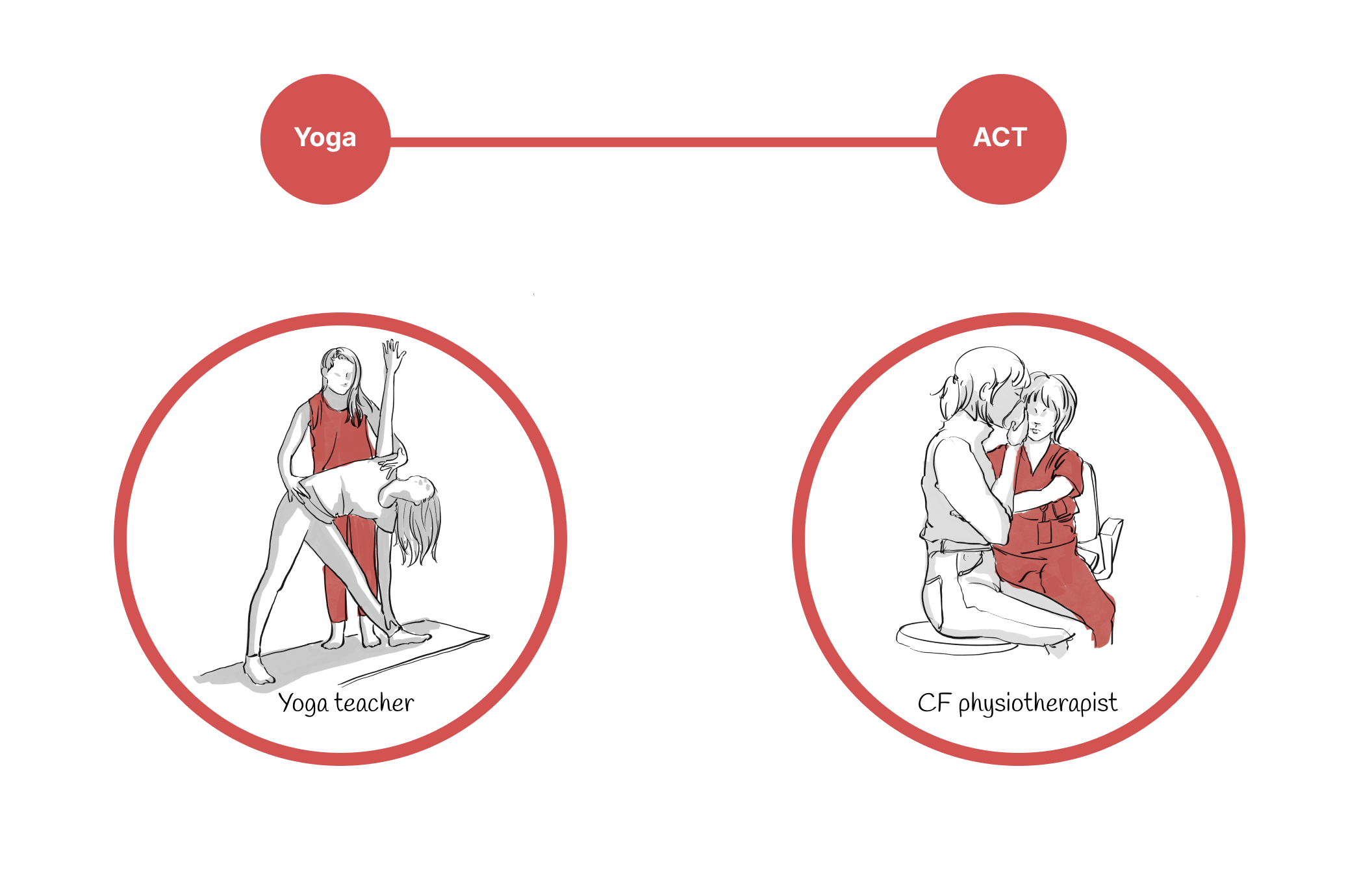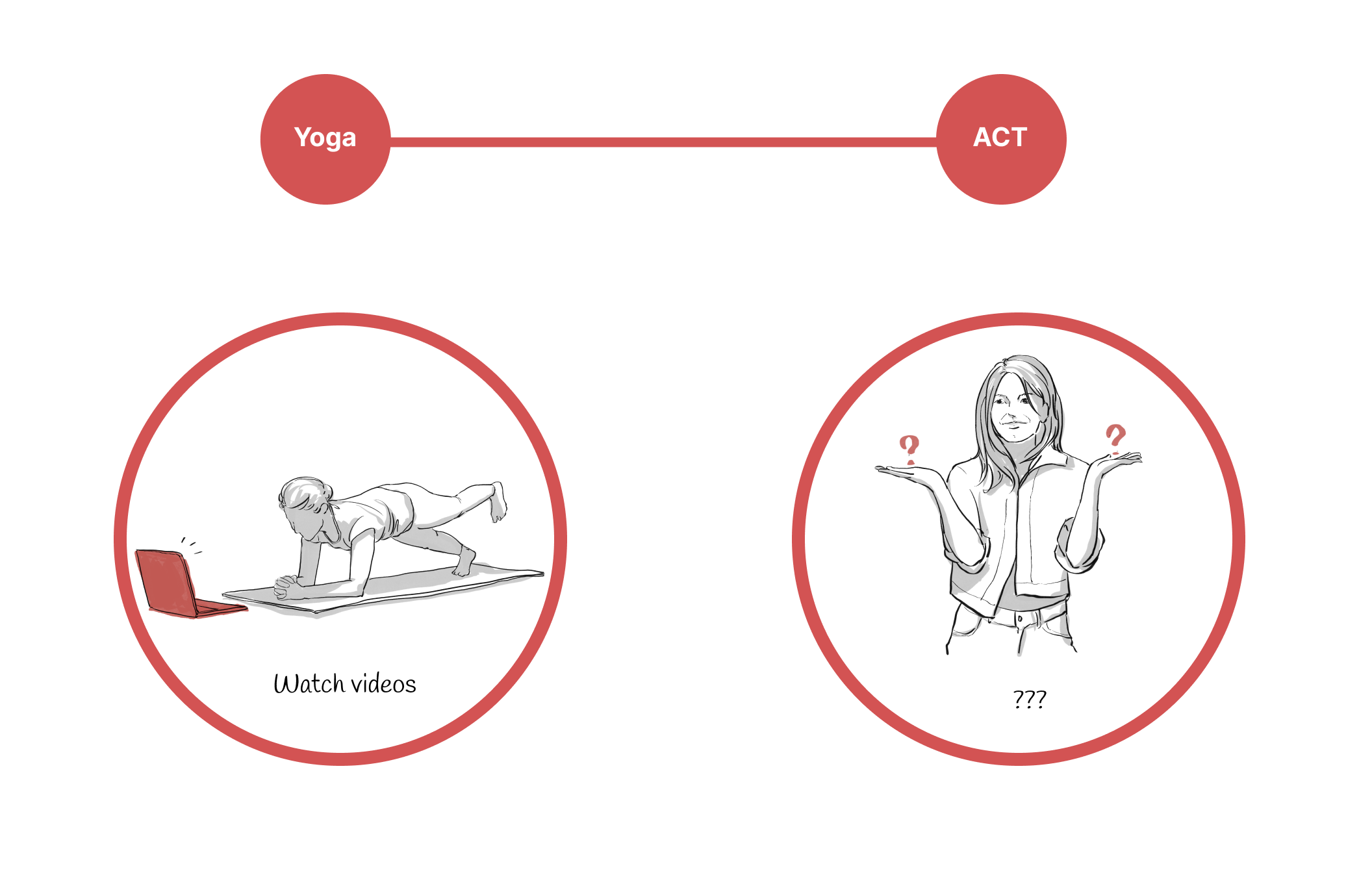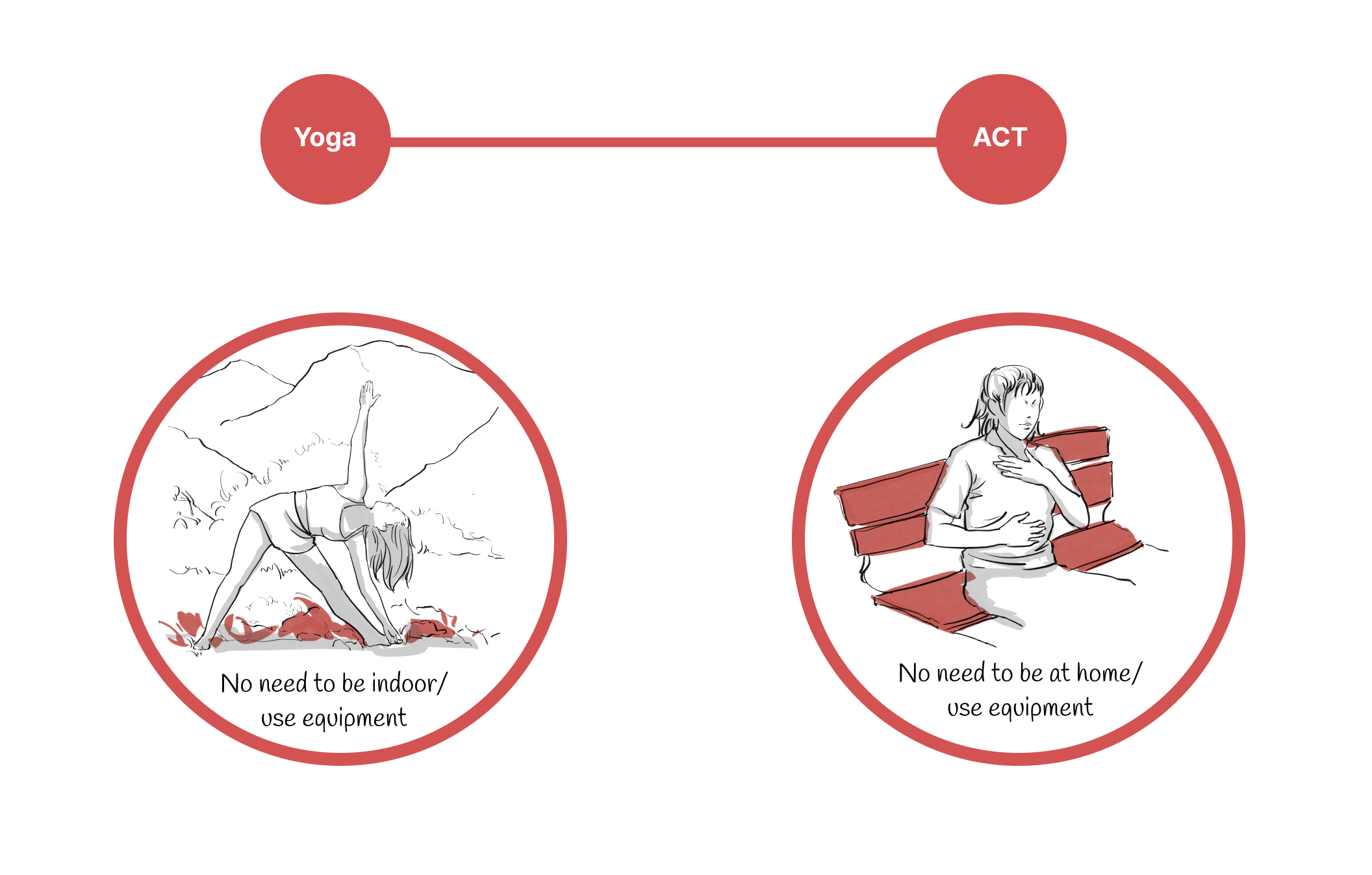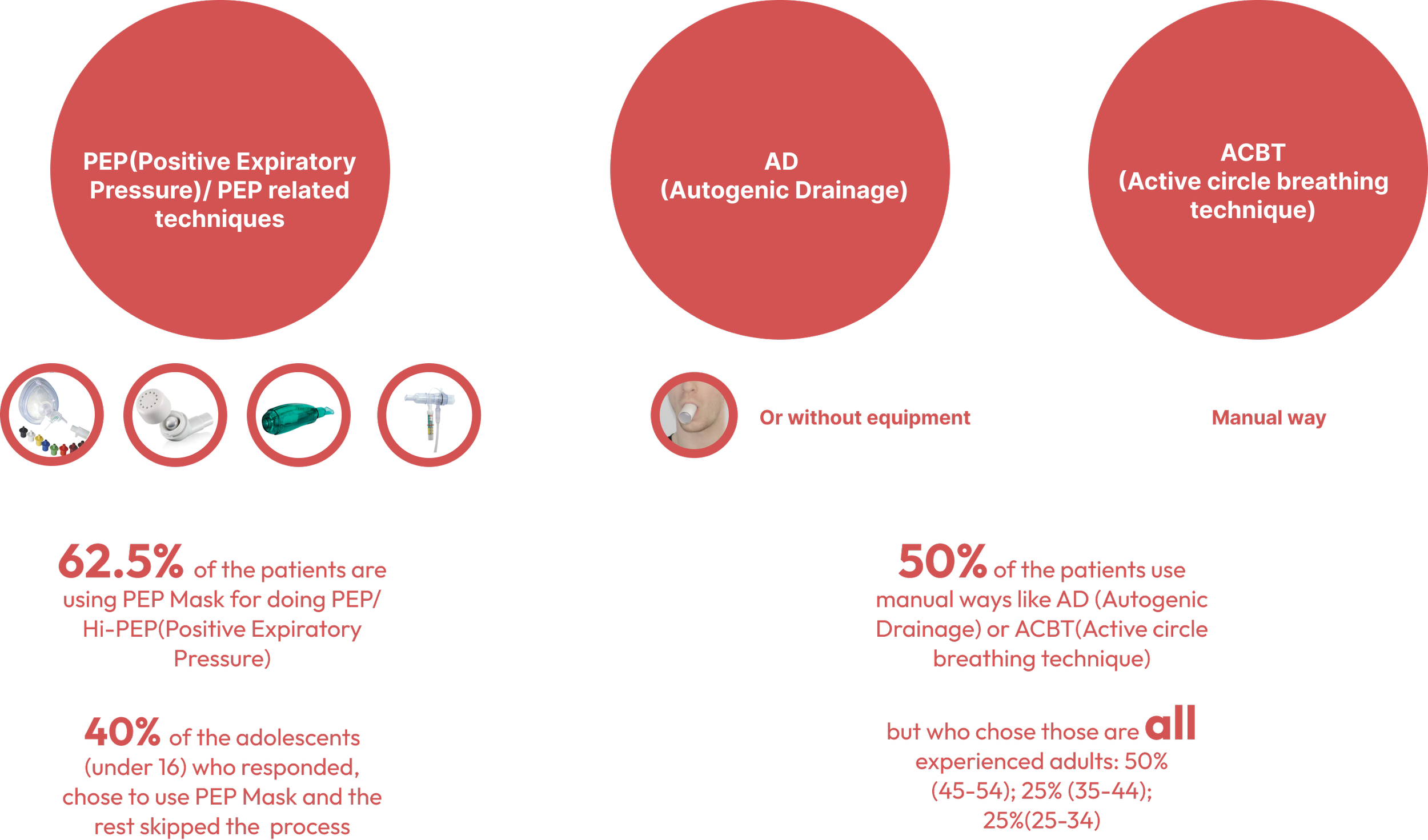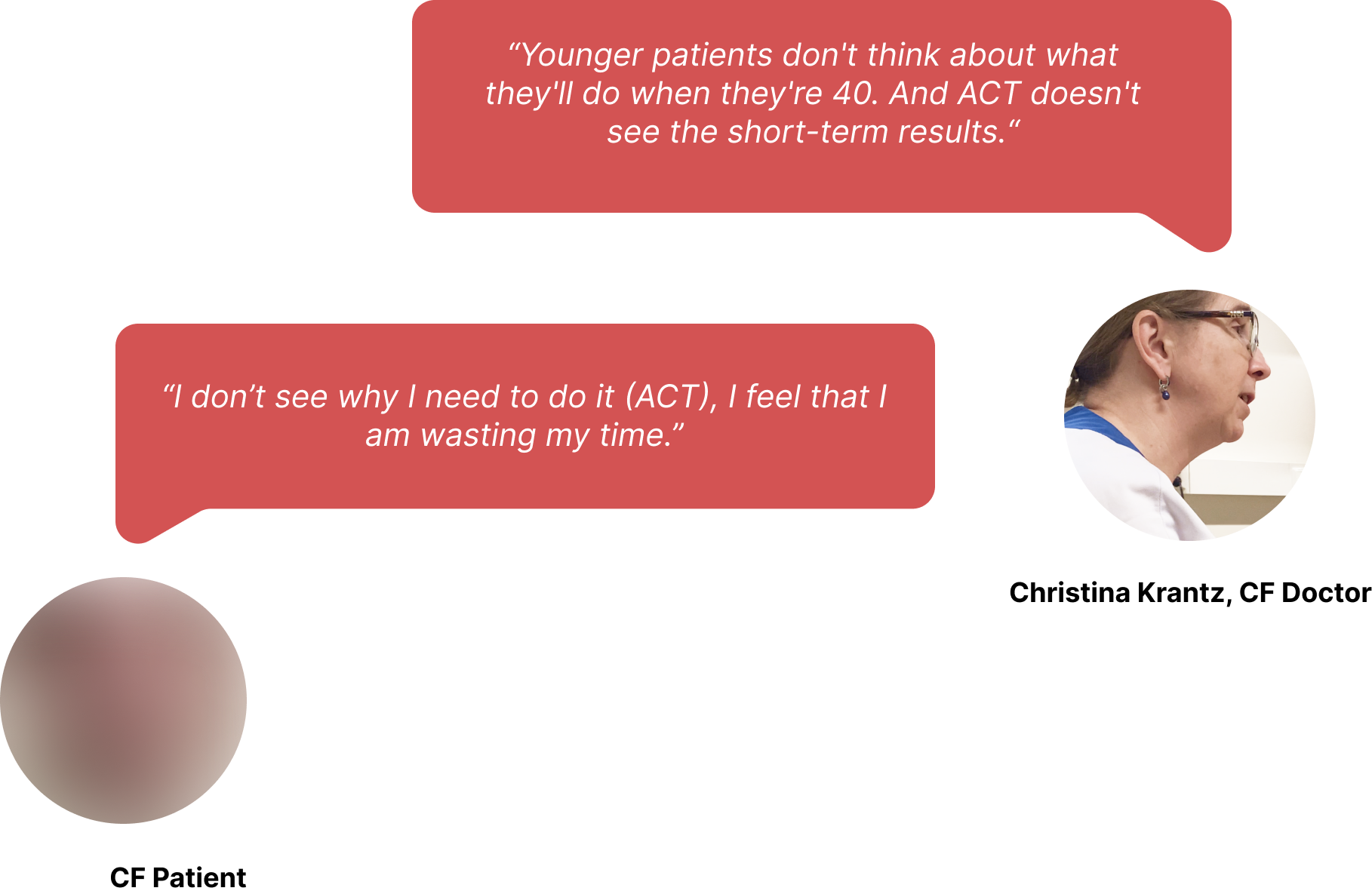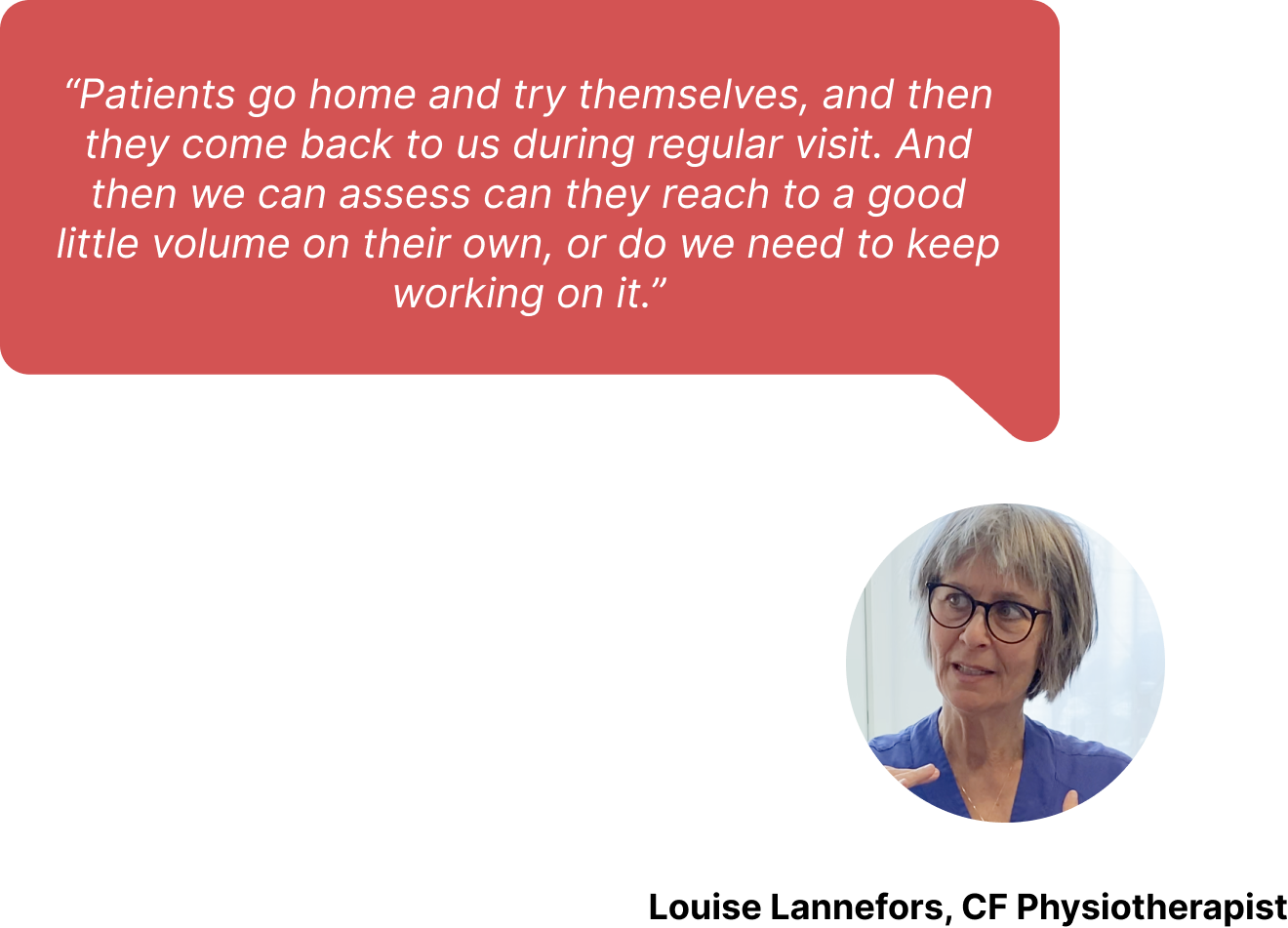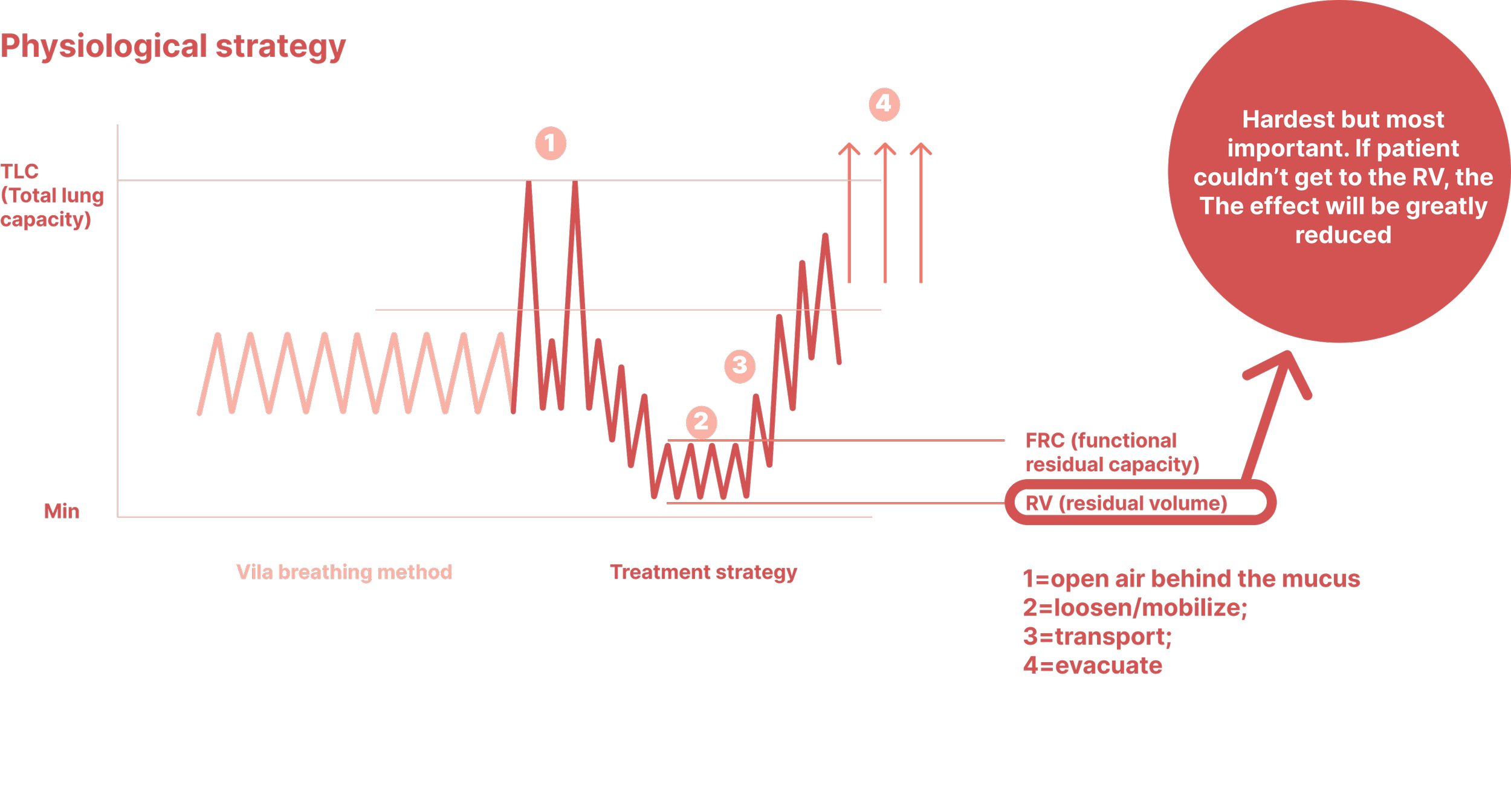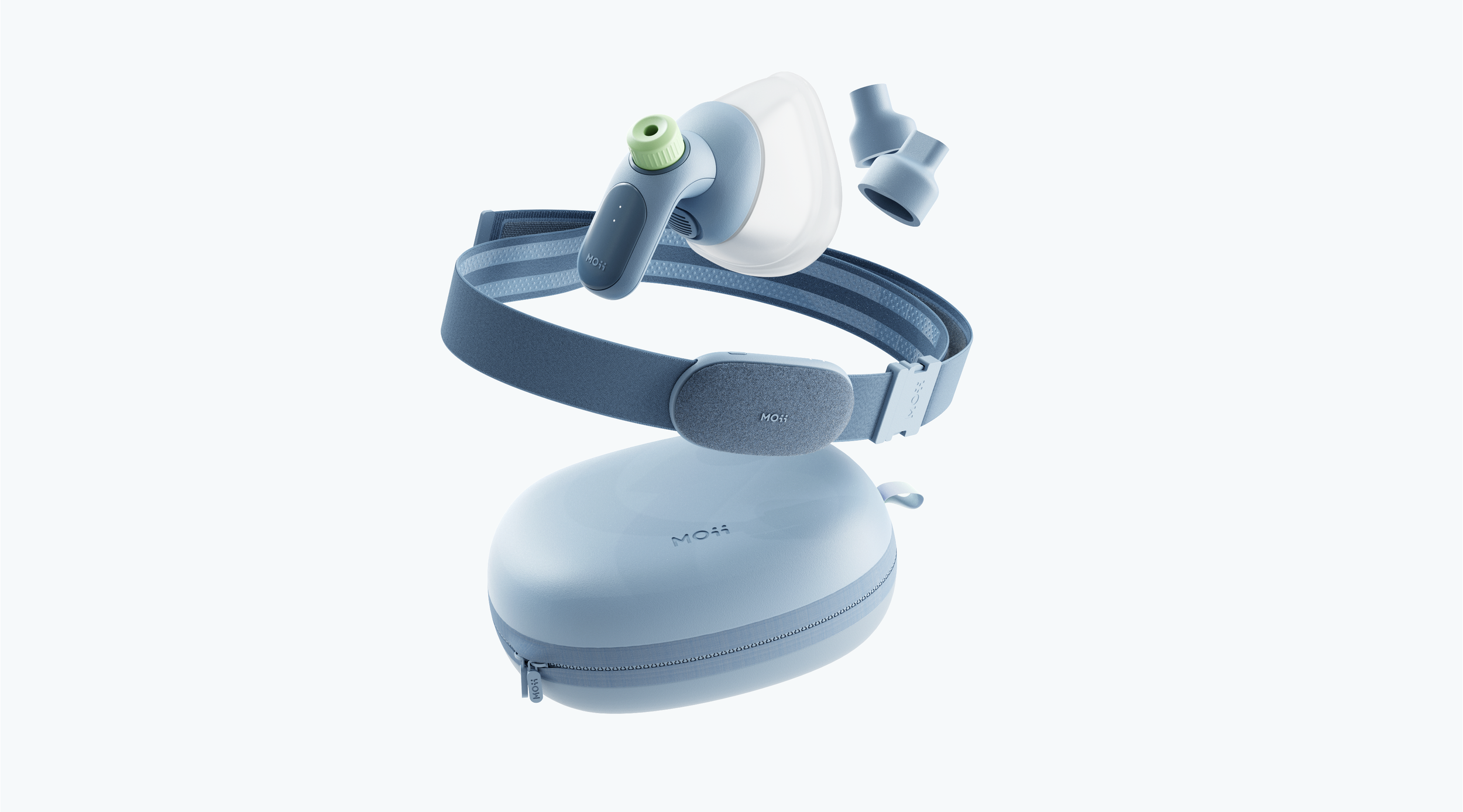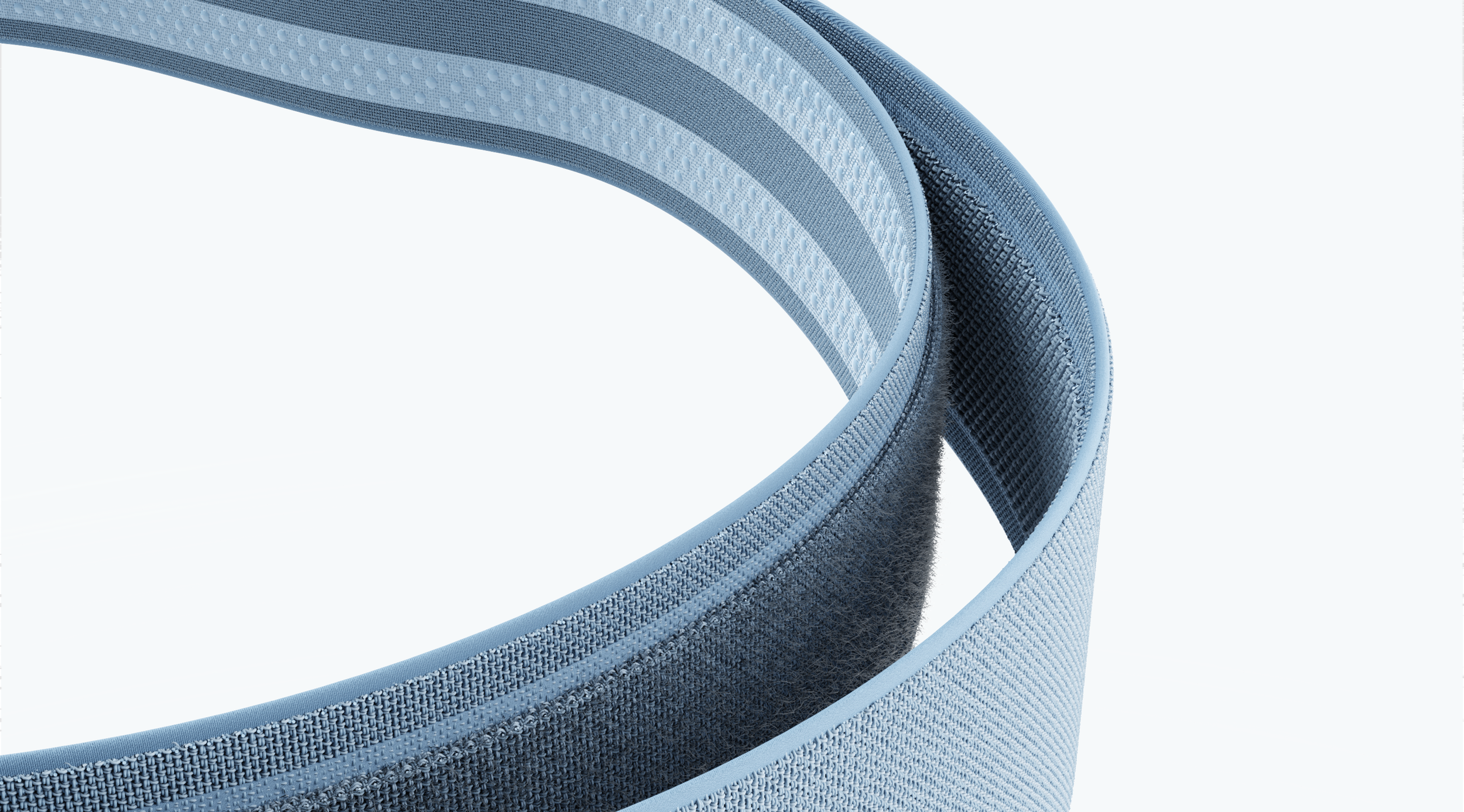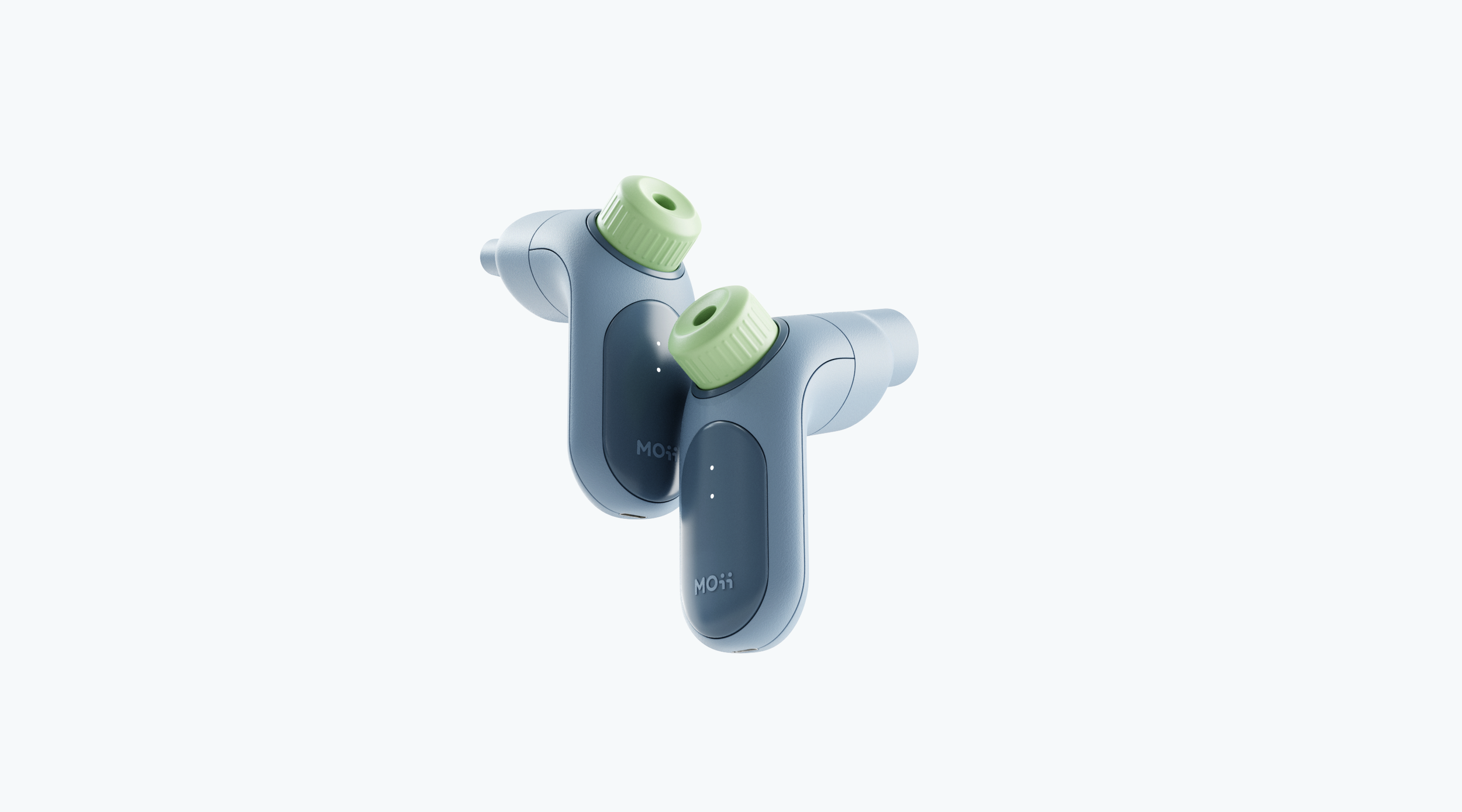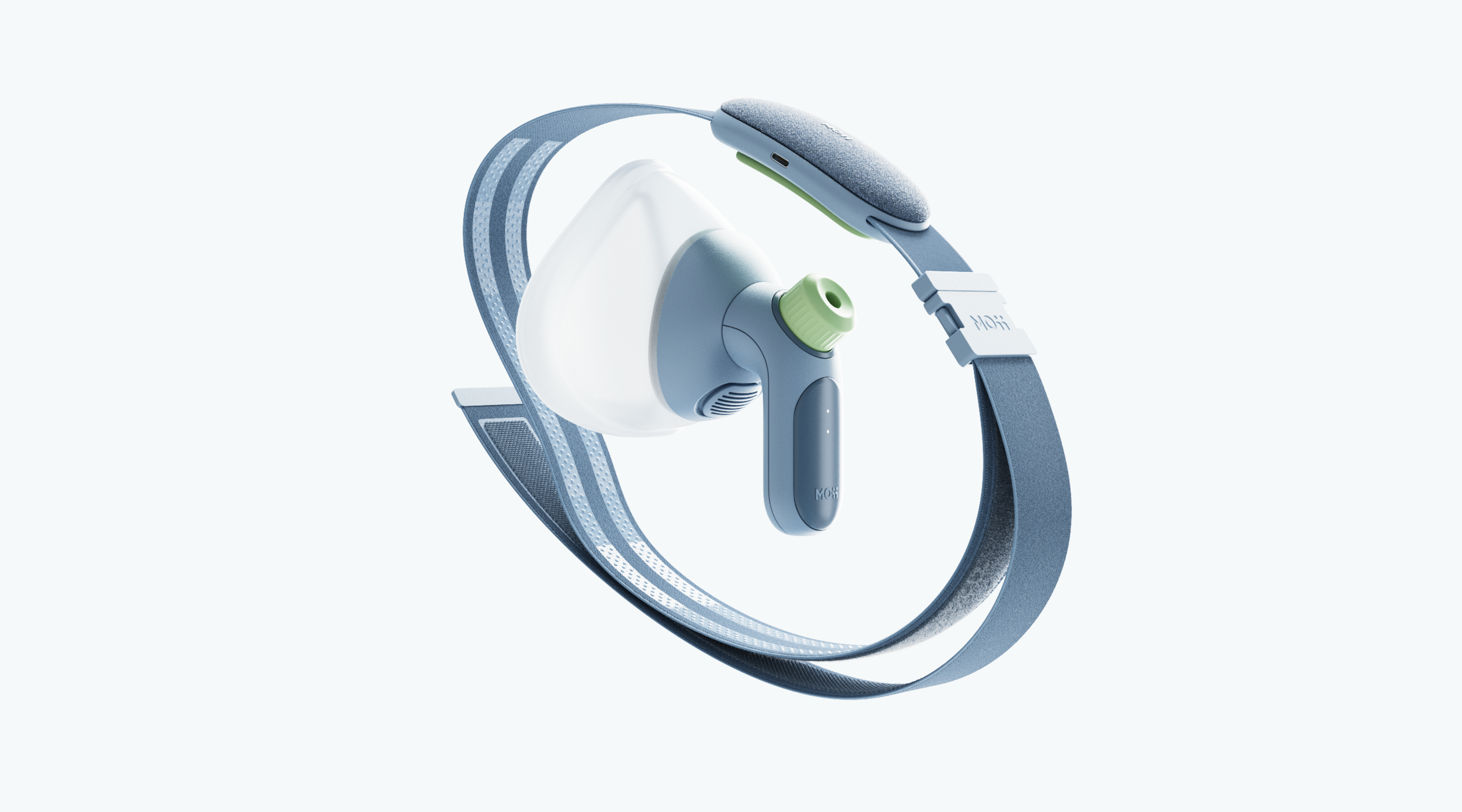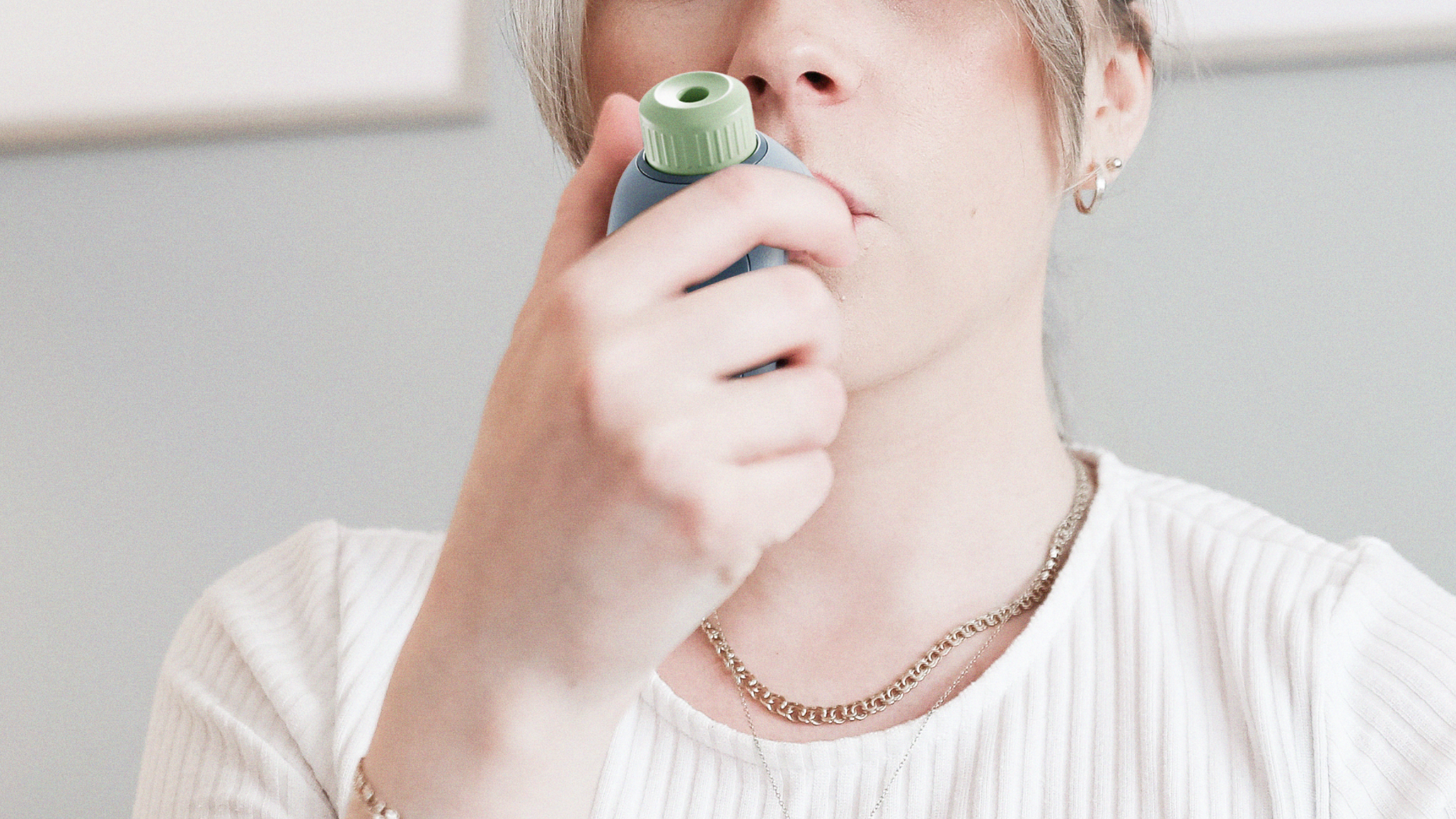Moii: a progressive ACT training kit
Keywords:
Home healthcare, user experience, patient psychology and behavior Study, interactive product solution
June 2023
Storytelling video
Abstract: what is this project about?
Cystic Fibrosis is a genetic disease that mainly affects the function of the lungs. The lungs of individuals with Cystic Fibrosis are colonized and infected by bacteria from an early age; most of the patients are diagnosed at birth. There is no cure for cystic Fibrosis, patients rely on treatments to remove secretions from their lungs, thereby reducing infection to prolong their lives. In this project, I targeted patients' "transition" (usually 12/13 years old, when patients started to manage their treatments themselves - young adulthood) to prevent patients from experiencing premature lung deterioration.
Why I chose this topic
Cystic Fibrosis is a rare disease. Patients are diagnosed from birth. From the moment they are diagnosed, their lives are completely changed. Their life span is shortened, their daily needs revolve around the treatments, they suffer from infections and become sicker and sicker over time, and their lives are far from "free." I chose this topic because I hope I can do something for patients to make their lives more colorful.
“It is an extremely complex project that requires a great deal of research and understanding, and many psychological issues are involved.”
What is Cystic Fibrosis?
Cystic Fibrosis is an inherited disease caused by mutations in a gene called the cystic fibrosis transmembrane conductance regulator (CFTR) gene. The CFTR gene provides instructions for the CFTR protein. The CFTR protein is located organs of the body that makes mucus.
“Cystic Fibrosis (CF) is a genetic disorder that affects mostly patients’ lungs.”
Research
I have been fortunate to receive help in this project, which included the Swedish Cystic Fibrosis Association(RFCF), CF Center Gothenburg, CF Center Uppsala, Fonden Citronfjärilen, Genia APP, and 28 patients and families, which helped me to learn deeply about the disease, the social environment, conditions, and even related policy. With Britta-Stina Nordensteds scholarship, I also conducted field trips to Stockholm, Uppsala, and Gothenburg as well as visited local patients in Umeå.
Main symptoms of Cystic Fibrosis: mucus
“This is an incurable disease and patients need daily treatment to maintain their lung function to prolong their lives…”
The problem: transition
When young CF patients start managing their own treatment (usually at age 12-13) to early adulthood is called the transition period. Getting through this time well is critical for CF patients. However, Patients are at high risk of experiencing a period of deterioration during this period.
The period of deterioration during the transition
Patients' lung function declines curvilinearly over their lifetime. However, it is difficult to compensate if lung function declines very much at a young age.
One year in Cystic Fibrosis patients’ life: regular visits for body check-ups
Cystic Fibrosis(CF) patients/families are required to visit the CF Center for CF screening every 6 months. In Sweden, there are 4 CF Centers located in southern Sweden, which means patients that live in other areas, for example, in the north, must travel all the way down to the south. In addition, patients also need to go to a local hospital for routine checkups every 9-12 weeks.
One day in Cystic Fibrosis patients’ life
People with CF have very little time for themselves. Theirs requires very special care: special diets, Airway Clearance Therapy (ACT), medications, antibiotics, exercise, etc.
“CF patients' lives revolve entirely around the disease! The problem arises when life and treatment conflict!”
Life VS. treatment
Adolescent patients are more or less resistant to treatment. They want to have fun with their friends and enjoy life. Treatment can be a big obstacle for them because they are limited by space (treatment usually needs to be done at home). Psychologically, they may feel that skipping treatment is a way to gain freedom.
Skipping Airway Clearance Therapy (ACT) is the main cause of deterioration
One of the biggest problems CF creates is too much mucus. ACT is the primary method of draining mucus from the patient's lungs. Skipping ACT means that the patient will not be able to drain the mucus, resulting in a very high probability of infection and lung damage.
“However, patients need to do ACT twice a day, with each ACT lasting about 0.5-1.5 hours!!!”
How can we understand ACT?
ACT sounds like a very difficult thing to understand. But we can understand it in a simple way: it is very similar to yoga. Doing yoga and doing ACT have a lot of similarities.
1. There is usually a specific location.
2. Use of equipment to assist when needed.
3. People don't move around when it's in progress.
4. More than one position can be used.
5. It is not so hard to do it with assistant and guidance.
6. But when inexperienced people do it themselves, they can do it badly.
7. Some extra help maybe needed. But for the ACT there are not so many options available to help.
8. Most importantly, when they have enough experience, they have more freedom!
The actual process of Airway Clearance Therapy
The ACT is divided into 4 main steps: open the air behind the mucus, loosen/mobilize, transport, and evacuate. The length of time the ACT lasts depends on when the mucus is cleared from the lungs
Common techniques and equipment for Airway Clearance Therapy
ACT has a wide range of techniques and equipment; patients will choose them according to their needs with the physiotherapist. However, no matter which step is taken, some options do not require tools.
“There is no good or bad distinction between the different techniques. They achieve the same result: removal of mucus.”
A role play video that helps understand Airway Clearance Therapy better
Problem 01: Patients do not see results doing Airway Clearance Therapy
What ACT can bring is an extension of life. But this is something that is very difficult to measure. So many young patients become bored with ACT because they don't see results.
Problem 02: Patients do not have a viable way to know if they are doing ACT correctly
The patient's ACT needs to follow a physiologic strategy. The most difficult part is the second step, blowing as much air out of the lungs as possible to achieve RV (residual volume). Today, there are no visual measures at home to let patients know how well they are doing with ACT and whether they are achieving RV.
Problem 03: A long and inefficient way to gain experience
Patients are only able to know if they are doing it correctly in the first 6 months by showing the physiotherapist at the regular visit every 6 months. A patient's cycle of learning is 6 months. And these 6 months may trigger a period of deterioration.
The two keys for doing Airway Clearance Therapy
Why?
Patients need to follow the physiological strategy. The hardest part for the ACT is exhaling all the air to dissolve the mucus. In addition, their ability to reach the RV line is critical to their ability to move the mucus and is vital to efficiency.
“However, there is no way to measure airflow and chest mobility in home treatment. Then how can patients know about the efficiency?”
“We can't change the fact that they need to do the therapy, so how can we maximize adolescent patients’ adherence?”
“All they want is more freedom!”
More details are coming soon!
Here are some visuals of the final result!
Usage scenario
Chest mobility wearable, breathing device, and app
Next project: Orbi

